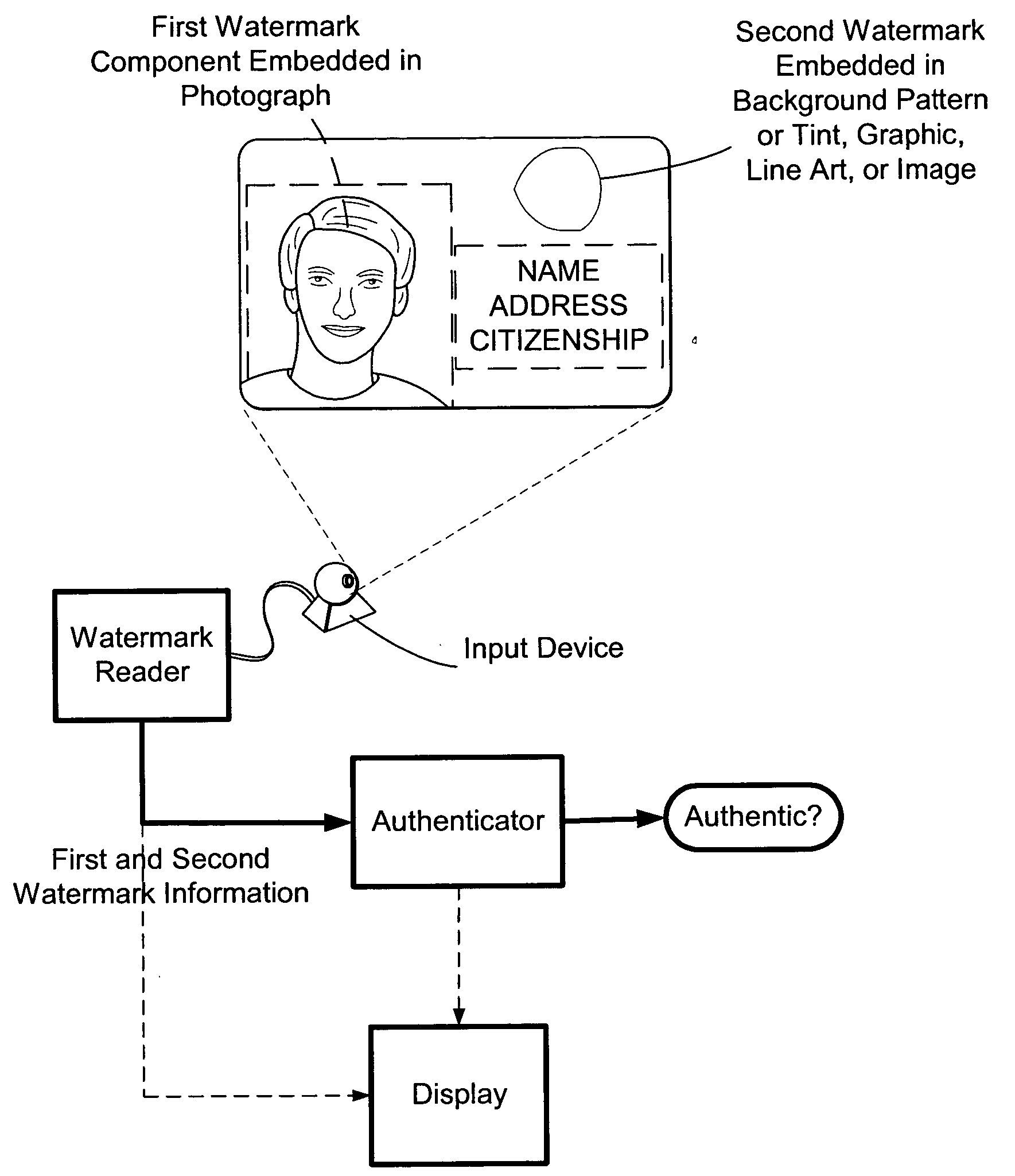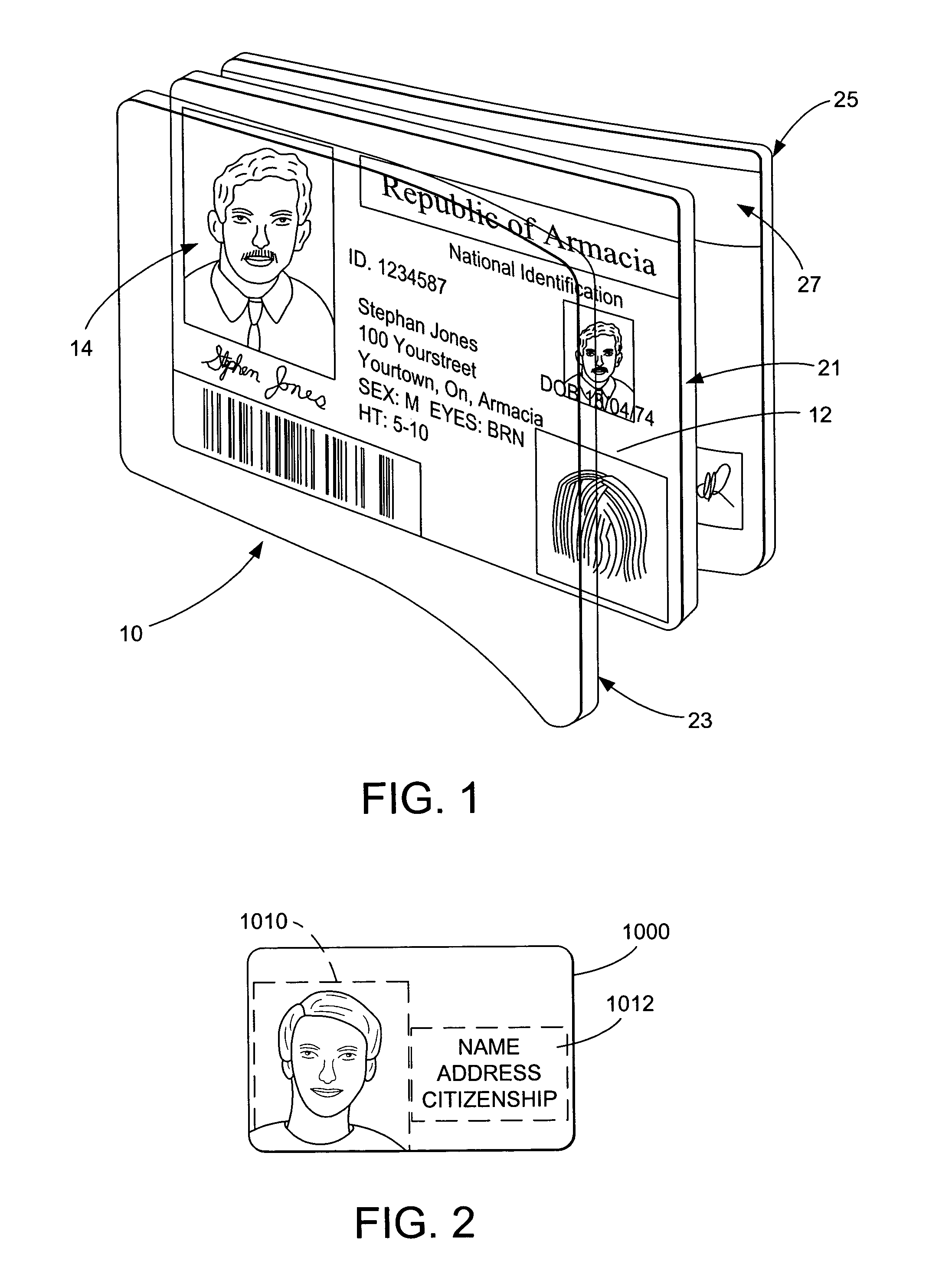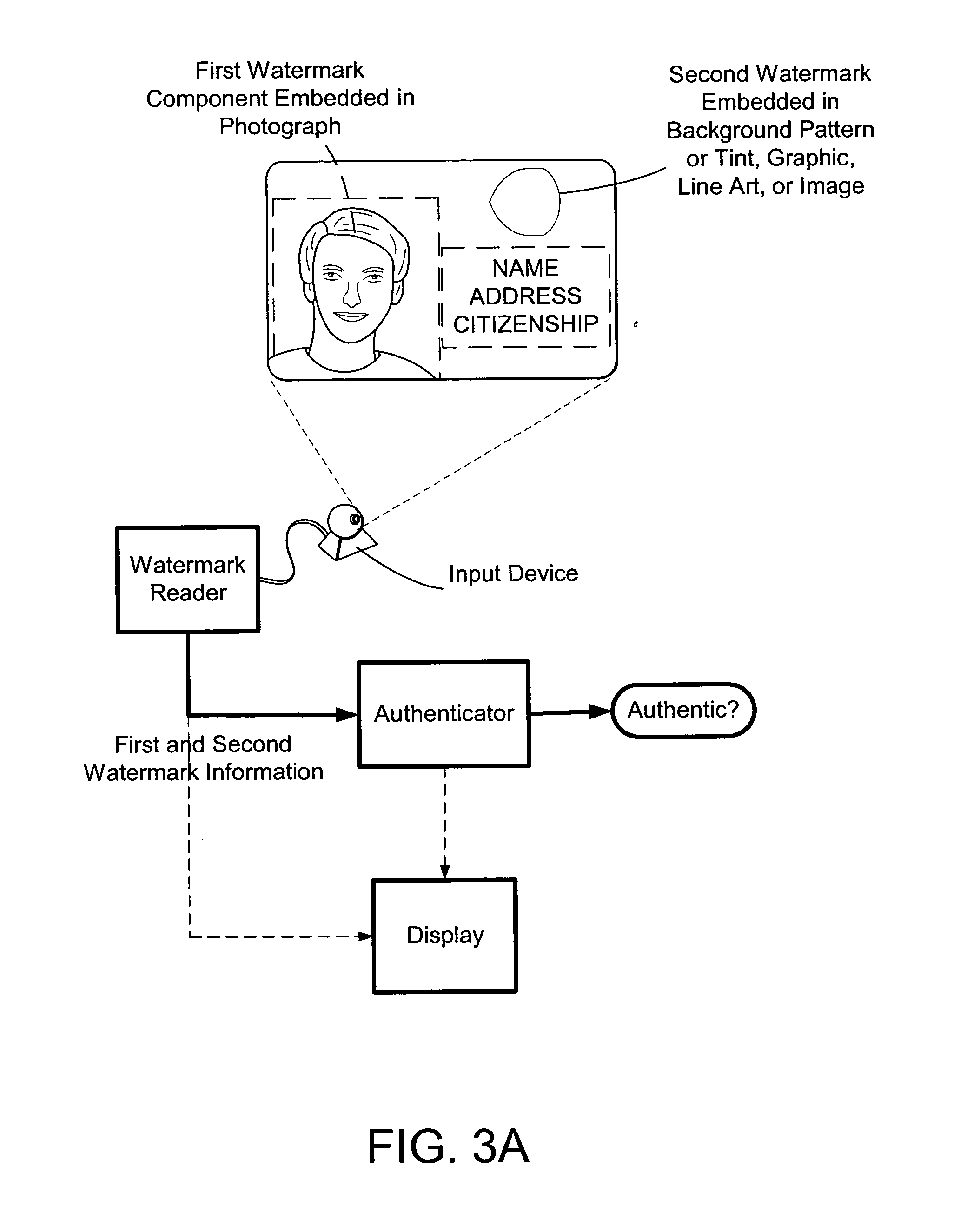Identification document and related methods
a technology of identification documents and identification documents, applied in the field of identification documents, can solve the problems of difficult detection, difficulty in confirming by inspection that the individual depicted in the photograph of the identification card is the individual depicted in the photograph, and the damage of the card is not visible, so as to achieve enhanced security and certainty in the use.
- Summary
- Abstract
- Description
- Claims
- Application Information
AI Technical Summary
Benefits of technology
Problems solved by technology
Method used
Image
Examples
first embodiment
[0045] Forensics and Proof of Compliance
[0046] As discussed above with respect to our '886 patent, a photo-ID can be enhanced through embedding data therein. Data can be embedded in, e.g., a graphic or background of the photo-ID. More preferable, however, is to embed the data in a photograph image. The watermark is preferably robust, in that it survives scanning and printing. In some implementations of this embodiment, the watermark is repeated or redundantly embedded throughout an image or document.
[0047] Although sometimes redundantly embedded across an entire document surface, a watermark can be embedded in a particular region of the document if desired (e.g., only in a photograph or a graphic). In an area-based embedding implementation, we can use a mask to identify areas for embedding (or areas that will not receive embedding). The watermark is embedded in identified areas (or is embedded to avoid areas). The watermark can also include a so-called orientation component. An ori...
second embodiment
[0052] Multiple Watermarks
[0053] Additional security is added to an identification document by providing first and second digital watermarks on the identification document. For example, a first digital watermark is embedded in first region of the identification document like in a photograph, artwork, graphic, seal, or image (e.g., ghost image). And a second digital watermark is provided in a second region of the identification card. For example, the second digital watermark is embedded in a background pattern or tint, line-art (see, e.g., assignee's U.S. Pat. No. 6,449,377) or in text, artwork, seal, images or graphics carried by the identification document. The first and second watermarks also may include a so-called orientation component. An orientation component is helpful to resolve image distortion such as rotation, scale and translation. (We note that the second watermark can be embedded using the same or different embedding protocol as the first watermark.). Although not nece...
third embodiment
[0085] Fragile Watermarks
[0086] A fragile or semi-fragile watermark is provided to any of the first and second embodiments as either a watermark replacement or to augment the above implementations. For example, in the second embodiment, a fragile watermark may be used as either the first or second watermark or as a third watermark component. In some implementations we preferably use our out-of-phase embedding techniques, e.g., as disclosed in PCT / US02 / 20832 (published in English as WO 03 / 005291), to embed a fragile watermark. It will be appreciated that a fragile watermark is designed to be lost or to predictably degrade upon certain types of signal processing. A semi-fragile watermark is designed to withstand normal signal processing, but is destroyed or predictably degrades upon malicious attacks.
[0087] The addition of a fragile or semi-fragile watermark adds protection against anticipated fraud scenarios by providing alerts when copies are made. Alteration in conjunction with ca...
PUM
 Login to View More
Login to View More Abstract
Description
Claims
Application Information
 Login to View More
Login to View More - R&D
- Intellectual Property
- Life Sciences
- Materials
- Tech Scout
- Unparalleled Data Quality
- Higher Quality Content
- 60% Fewer Hallucinations
Browse by: Latest US Patents, China's latest patents, Technical Efficacy Thesaurus, Application Domain, Technology Topic, Popular Technical Reports.
© 2025 PatSnap. All rights reserved.Legal|Privacy policy|Modern Slavery Act Transparency Statement|Sitemap|About US| Contact US: help@patsnap.com



